Navigating the world of social media can feel a bit like juggling flaming torches while riding a unicycle—thrilling yet fraught with potential missteps.
If you’ve ever found yourself staring at a screen, wondering if your carefully crafted blog posts are reaching anyone at all, you’re not alone.
Trust me, I’ve been there, sifting through analytics that look more like a second language than a roadmap to success.
But here’s the good news: understanding your audience is the key to mastering social media.
By knowing who your readers are and what makes them tick, you can transform from a solo performer in a circus act into a masterful conductor uniting a symphony of engaged followers.
Let’s think about it for a moment—what if the people who resonate most with your content, the ones who eagerly engage with your posts, are just a bit misunderstood? Each follower brings a unique story, a different background, and distinct preferences to the table.
According to a recent survey by HubSpot, a staggering 72% of marketers emphasize that understanding their audience is vital for success in delivering content that truly resonates.
Imagine taking the time to craft profiles that encapsulate your audience’s age, interests, and the challenges they face.
This isn’t just data; it’s the heartbeat of your community.
You’re not just throwing spaghetti at the wall anymore; you’re serving up gourmet meals tailored to their taste.
Once you have a grip on demographics, the next move is to get into the nitty-gritty—analyzing audience behavior and preferences like a detective piecing together a puzzle.
Tracking which types of content land best feels like being handed the winning lottery numbers.
Did your last post featuring a quirky infographic soar above the others? Or did that heartfelt story elicit a flood of comments and likes? According to findings from Sprout Social, 80% of individuals prefer connecting with brands that focus on personal interactions—not just generic content.
Now, doesn’t that spell out a golden opportunity? The more you know about how your audience interacts, the better you can tailor your posts to fit their likes, needs, and even those random whims we all have.
Finally, we can’t forget about the importance of weaving this understanding of your audience into a well-structured, engaging plan that meets their needs head-on.
Tailoring your content isn’t just about meeting their expectations; it’s about delighting them, surprising them, and consistently giving them a reason to click “like” or—gasp—share your posts with friends.
Our collective attention spans may be dwindling, but studies show that personalized content can drive engagement rates soaring.
So, as we dive into the nitty-gritty of understanding your audience on social media, remember: this isn’t just a strategy—it’s an invitation to connect on a deeper level, creating lasting relationships that could take your blogging endeavors to heights you hadn’t even thought possible.
Understanding Your Audience on Social Media
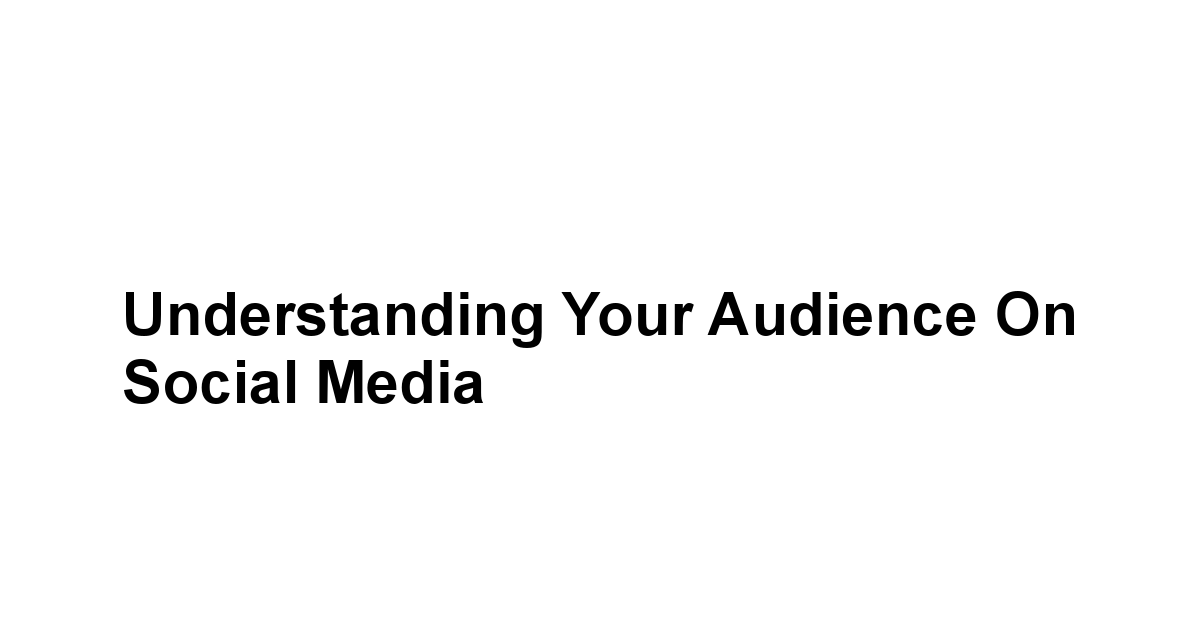
Understanding your audience is the cornerstone of any successful blogging venture, particularly when it comes to social media.
Knowing who your readers are—what they like, what they need, and how they interact—plays a critical role in how effectively you can communicate with them.
It’s not just about amassing followers; it’s about fostering genuine connections and ensuring that the content you share resonates deeply with their interests.
You can think of your audience as a vibrant community, each individual bringing their unique perspectives and preferences.
Take the time to appreciate the diversity in their backgrounds, cultures, and preferences.
Understanding your audience helps you create tailored content that speaks to their hearts and minds, ultimately building a loyal readership.
Identifying Your Target Demographic
To start identifying your target demographic, consider these steps:
-
Create Audience Personas: Construct detailed profiles of your ideal readers. Think about their age, gender, location, interests, and pain points. What challenges do they face that your blog content can address?
-
Utilize Social Media Analytics: Platforms like Facebook and Instagram offer analytics tools that can provide insights into the demographics of your followers. Utilize these features to gather data on age ranges, interests, and geographical location.
-
Surveys and Polls: Engage your existing audience with surveys or polls. Ask them about their preferences directly. Questions can include what topics they want to read about or which social media platforms they prefer to interact on.
-
Examine Competitors: Look at similar blogs or influencers in your niche. Who are they targeting? This examination can offer insights into untapped audience segments that may be valuable to your content strategy.
According to data from HubSpot, 72% of marketers state that understanding their audience is crucial for delivering successful content.
Analyzing Audience Behavior and Preferences
Once you’ve identified your target demographic, the next step is to analyze their behavior and preferences on social media.
Here’s how:
-
Content Engagement Metrics: Examine which posts receive the most likes, shares, and comments. This will give you a clear picture of what resonates with your audience. Monitor engagement over time to identify trends.
-
Time Spent on Posts: Utilize analytics tools to determine how long followers spend engaging with your posts. Are they reading the whole article or bouncing away after just a glance?
-
Social Listening Tools: Implement tools like Hootsuite or Sprout Social to track what people are saying about your content and your brand on social media. Engaging with these conversations can reveal valuable insights.
-
Feedback and Comments Analysis: Pay attention to the type of feedback and comments your content elicits. Are people asking questions? Complimenting certain aspects? This data can be invaluable for future content planning.
Statistics reveal that 70% of people use social media to discover brands, products, and services, making understanding their preferences even more crucial for your blog growth.
Tailoring Content to Meet Audience Needs
Once you have a handle on your audience’s behavior and preferences, the next logical step is tailoring your content to meet their needs.
Personalization in content creation can lead to a more engaged audience.
Here are some effective strategies:
-
Content Formats Based on Preferences: Identify the formats your audience prefers—be it long-form articles, short posts, infographics, or videos. For example, if video content gets the most engagement, consider creating more videos related to your blog topics.
-
Addressing Pain Points: Ensure your blog tackles the challenges your audience faces. If your target demographic is busy professionals, try offering quick, actionable tips instead of longer content.
-
Seasonal and Trend-Driven Topics: Create content that aligns with seasons or current trends relevant to your audience. Utilize tools such as Google Trends to stay updated on topics that capture attention.
-
A/B Testing: Experiment with different variations of your content and analyze which ones your audience prefers. Changing headlines, images, or calls to action can yield valuable data on audience preferences.
Personalizing your content in these ways not only builds loyalty but also encourages sharing, effectively boosting your blog’s reach on social media platforms.
Choosing the Right Social Media Platforms
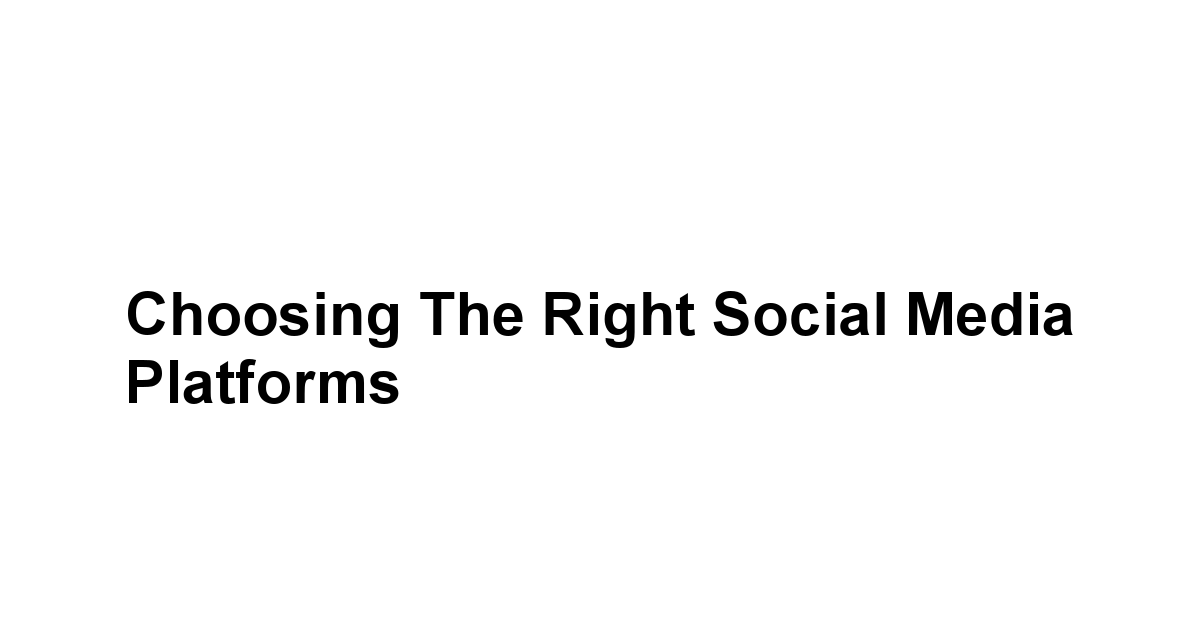
It’s essential to choose the right platforms for your blog to maximize your reach.
This means not only considering where your audience spends their time but also aligning your goals with what those platforms can offer.
Choosing the right social media platform is akin to picking the appropriate tools for a job—it can significantly influence your success.
A well-chosen platform can boost visibility, engagement, and blog traffic while a misaligned choice can lead to wasted efforts and missed opportunities.
Exploring Popular Platforms for Blogging
As a blogger, you have a variety of platforms at your disposal.
Each has unique strengths that can complement your blogging strategy:
-
Facebook: Known for its vast user base, Facebook offers opportunities for promoting blog posts, engaging in niche groups, and building communities around your brand.
-
Instagram: This visually-oriented platform is perfect for sharing eye-catching images, infographics, and short reels, helping your blog reach a younger, trend-savvy audience.
-
Pinterest: This platform excels in driving blog traffic, especially for visual content, DIY projects, and lifestyle blogs. Its user base often seeks inspiration, making it a valuable asset for your blog promotions.
-
LinkedIn: If your blog is industry-specific or caters to professionals, LinkedIn can help you connect with like-minded individuals and share in-depth articles related to your field.
According to Statista, as of 2023, there are over 4.7 billion social media users worldwide.
This means there’s a vast potential audience waiting to discover your content.
Assessing Platform Usefulness for Your Niche
Understanding your blogging niche is vital for choosing the right platform.
Here are some factors to consider:
-
Audience Analysis: Research where your target audience is most active. For instance, if you are targeting young professionals, consider platforms like Instagram and LinkedIn, as these are frequented by such demographics.
-
Content Type: Different platforms favor different types of content. If your blog focuses on travel or food, visually appealing platforms like Instagram and Pinterest may yield more success.
-
Engagement Potential: Some platforms like Facebook offer various features like groups and live videos allowing deeper engagement opportunities. Assess where you can create meaningful dialogue with your audience.
-
Resource Availability: Not every platform may fit your capacity. Consider what resources time, skills, team you have available to maintain an active presence on your chosen platforms.
Diving deep into understanding your niche and its audience can lead to more informed strategy development, enhancing your success on social media.
Aligning Your Blog’s Goals with Platform Features
It’s essential to align your blog’s goals with the features offered by various social media platforms.
Here are some examples:
-
Traffic Generation Goals: If your main objective is driving traffic to your blog, consider using platforms that support sharing links and long-form content, such as Facebook and LinkedIn.
-
Brand Awareness Goals: For a focus on brand awareness, platforms with strong visual capabilities, like Instagram and Pinterest, can help showcase your blog identity effectively.
-
Community Building Goals: If fostering a community is a priority, consider platforms that support groups and discussions, such as Facebook or Reddit.
-
Lead Generation Goals: If your aim is to generate leads for a product or service through your blog, platforms like LinkedIn, which cater to professional networking, could be highly beneficial.
Aligning your blog goals with the platforms accordingly ensures that you maximize engagement and conversion opportunities, giving your blog a better chance at success.
Crafting Engaging Social Media Posts

Creating engaging social media posts is essential for capturing your audience’s attention and driving them to your blog.
Crafting a message that resonates requires a blend of creativity and strategy.
As a writer with years of experience, I’ve learned that authentic engagement often translates into a deeper connection with your audience.
Every post you create is a reflection of your brand, your values, and the community you wish to build.
Therefore, putting thought into how you present your content—whether through striking visuals, compelling headlines, or creative hashtags—can lead to more meaningful interactions with your audience.
Writing Captivating Headlines and Captions
Headlines play a crucial role in grabbing attention.
Follow these tips to create captivating headlines and captions:
-
Use Strong Verbs and Adjectives: Strong language can create a sense of urgency or excitement. For example, “Discover the Secret to Effortless Blogging Success” commands attention more than “Blogging Techniques.”
-
Keep It Concise: Especially on platforms with character limits like Twitter, brevity is key. Communicate your message clearly without unnecessary fluff.
-
Incorporate Questions: Asking questions in your captions can pique curiosity. For instance, “What’s your biggest challenge in blogging?” invites engagement.
-
Add Value: Clearly state what followers will gain by clicking through. Phrases like “Learn how to…” or “Get tips on…” suggest valuable takeaways that can attract clicks.
According to CoSchedule, 80% of people will read a headline, but only 20% will read the rest of the content.
This places even greater emphasis on crafting an effective headline.
Utilizing Eye-Catching Visuals
Visuals can significantly enhance the appeal of your social media posts.
Consider the following points:
-
High-Quality Images: Use high-resolution images relevant to your content. Tools like Canva can help you create professional visuals even if you’re not a graphic designer.
-
Consistent Branding: Develop a recognizable style for your visuals. This could mean using similar color schemes, fonts, or logos in every post to build brand identity.
-
Infographics: If you’re sharing data or tips, consider creating infographics. They often perform well on social media, making complex information digestible.
-
Videos and Stories: Engaging formats like short videos and stories can capture your audience’s attention more effectively than static images. According to Wyzowl, 86% of businesses use video as a marketing tool.
Investing time into creating visually engaging posts can improve your social media presence significantly, leading to increased engagement and blog traffic.
Incorporating Hashtags Effectively
Hashtags are critical for expanding your reach on social media platforms.
Here are some effective strategies for using them:
-
Research Trending Hashtags: Use tools like Hashtagify or RiteTag to find trending hashtags that fit your content. This can help expose your posts to a broader audience.
-
Use Relevant Hashtags: Avoid adding unrelated hashtags in an attempt to gain visibility. Stick to those relevant to your content and your blog’s niche.
-
Mix Popular and Niche Hashtags: While popular hashtags can give you immediate visibility, using niche-specific ones can help target a more engaged audience.
-
Create a Unique Hashtag: Develop a hashtag specific to your blog or a campaign you are running. Encourage your followers to use it when sharing related content.
Statistics show that posts with at least one hashtag perform 12.6% more engagement than those without, reinforcing their importance in social media strategy.
Building a Consistent Posting Schedule
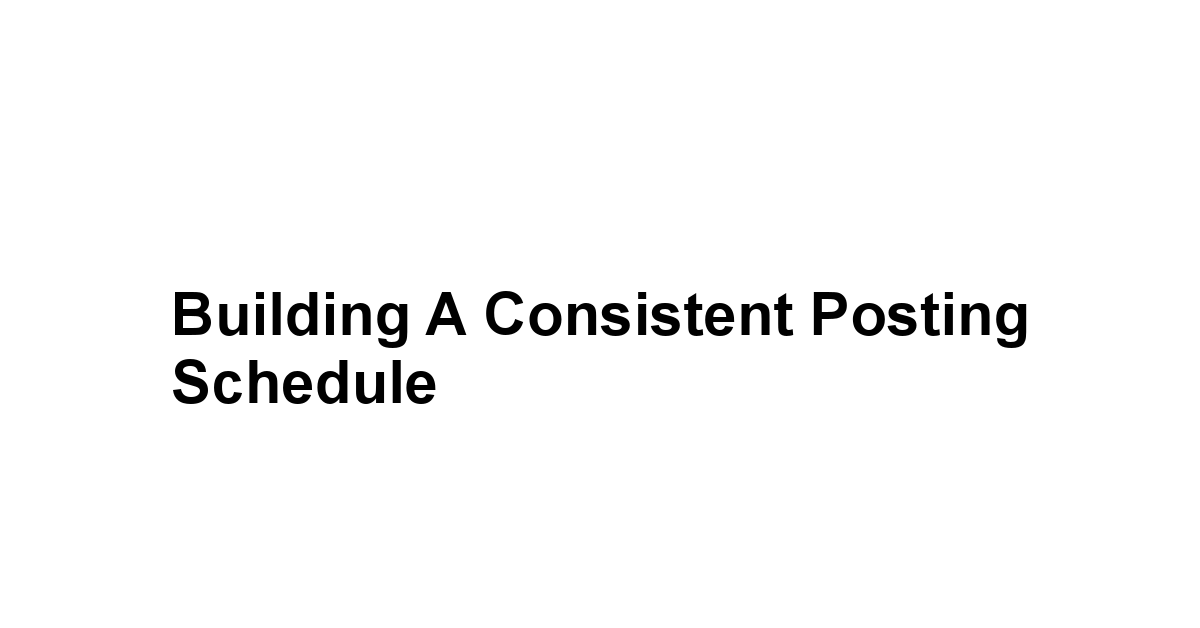
A consistent posting schedule is essential for maintaining engagement and visibility on social media.
It helps keep your content fresh in your audience’s mind and builds anticipation for new posts.
As I’ve learned over the years, every moment spent planning is a moment saved in execution.
When your followers know when to expect your content, they’re more likely to engage with it regularly.
Additionally, a well-structured posting schedule allows for strategic planning around your most significant blog projects, ensuring you stay aligned with your goals.
Determining Optimal Posting Times
To maximize engagement, consider these strategies for determining optimal posting times:
-
Analyze Historical Data: Review insights from previous posts to identify when your audience is most active. Most social media platforms offer analytics tools that provide this data.
-
Follow Broad Recommendations: General data suggests that weekdays, particularly Tuesday to Thursday, see higher engagement rates. Experiment with posting at different times during these days to see what works best.
-
Consider Time Zones: If your audience is global, be mindful of time zones. You may need to schedule posts to hit peak times in different regions.
-
Testing: Don’t hesitate to test posting during different hours. Take notes on which times yield the highest engagement and adjust accordingly.
According to a study by Sprout Social, the best times to post on social media vary by platform but often peak during typical lunch hours and early evenings.
Creating a Content Calendar
Developing a content calendar can be a lifesaver for bloggers looking to maintain a steady stream of social media posts:
-
Monthly Layout: Create a monthly calendar where you can quickly jot down ideas for posts, themes for the week, or specific promotions.
-
Include Important Dates: Mark holidays, special events, or themes relevant to your niche on the calendar. Tailoring content around these can enhance relevance and engagement.
-
Align with Blog Posts: Plan your social media content around the blog posts you’ll be publishing. This integrated approach ensures that every post supports your wider content strategy.
-
Flexibility: While a calendar is a guideline, stay flexible to incorporate spontaneous content opportunities, such as trending topics or unique insights.
Having clarity on what content you’re sharing when can ease the stress of daily management and allow you to focus on creating high-quality content.
Balancing Frequency and Quality of Posts
Finding the right balance between frequency and quality is essential.
Here’s how to achieve that:
-
Set a Realistic Posting Frequency: Decide on a posting frequency that fits your capacity. It’s better to post fewer, high-quality pieces than many low-quality ones.
-
Evaluate Engagement: Monitor how your audience responds to your posting frequency. If engagement begins to drop, it may be time to scale back a bit.
-
Quality Control: Prioritize content quality over quantity. Ensure every post reflects your brand’s values and adds value to your audience.
-
Schedule Ahead: Use scheduling tools like Buffer or Hootsuite to plan your posts in advance, ensuring a steady flow of content without compromising quality.
A balanced approach to posting can help maintain your audience’s interest while ensuring that each piece of content is polished and meaningful.
Engaging with Your Followers
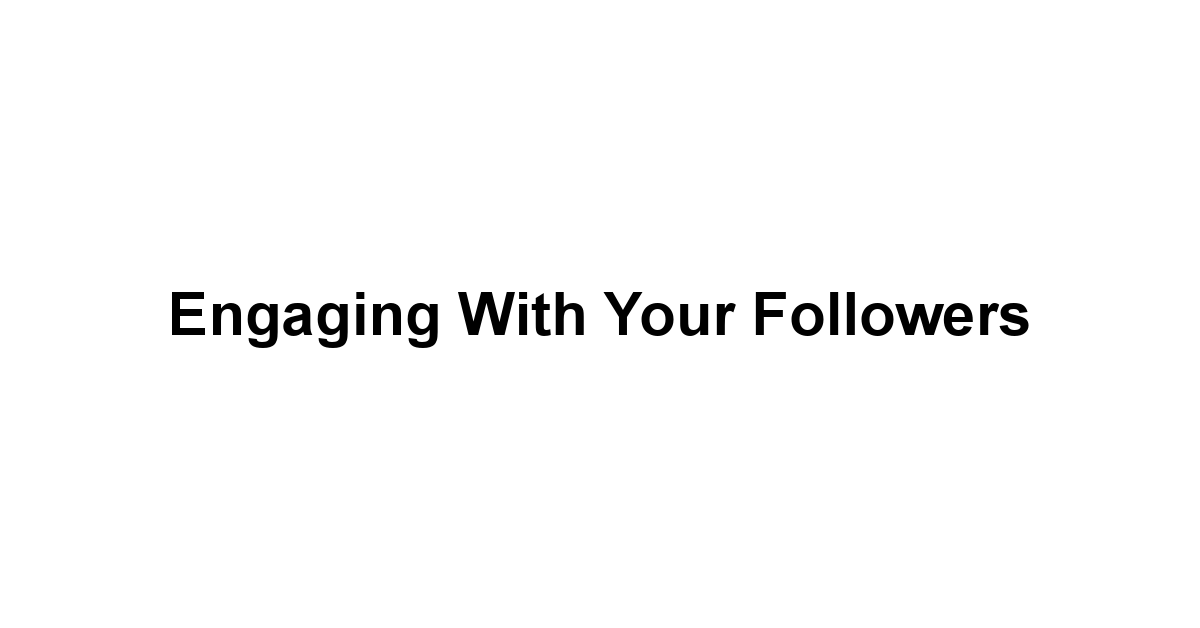
Building relationships with your audience goes beyond simply posting content; it involves actively engaging with them.
Taking the time to respond, ask for feedback, or even initiate conversations can create a sense of community around your blog—something highly beneficial for fostering trust and loyalty.
Social media is inherently social, and by engaging with your followers, you humanize your brand and open the door to deeper connections.
It allows you to learn from your audience and understand their needs better, which is invaluable for content creation.
Responding to Comments and Messages
Engagement starts with responding to your audience.
-
Respond Promptly: Try to respond to comments and messages in a timely manner. This shows your audience that you value their input and are invested in the conversation.
-
Personalized Responses: Rather than sending generic replies, tailor your responses to be more personalized. A simple acknowledgment of someone’s comment can make them feel special.
-
Encourage Dialogue: Ask questions or invite further discussion in your responses. For example, if someone comments on a post, respond with a question that encourages them to elaborate on their thoughts.
-
Address Concerns: If a follower raises a concern, address it openly. This can demonstrate your commitment to maintaining transparency and integrity with your audience.
Research from Sprout Social indicates that 40% of individuals prefer brands that engage with them on social media, reinforcing the need for active interaction.
Encouraging User Interaction
Encouraging user interaction boosts engagement and fosters a sense of community:
-
Ask Open-Ended Questions: Pose questions that require more than just “yes” or “no” answers. This invites followers to share their thoughts and can lead to more in-depth discussions.
-
Polls and Quizzes: Utilize features such as polls or quizzes to engage users interactively. It’s a fun way to get feedback while also learning what interests your audience.
-
Contests and Giveaways: Hosting contests can drive excitement and encourage user participation—just be sure to follow fair guidelines to maintain trust.
-
Call-to-Action: End your posts with a call-to-action encouraging users to comment, share, or tag a friend. Simple prompts can go a long way in increasing interaction rates.
According to a report from HubSpot, including a call to action can increase social media interactions up to 400%, highlighting how effective these strategies can be.
Building a Community around Your Blog
Creating a genuine sense of community around your blog can turn readers into loyal followers.
Here are some methods for fostering community:
-
Create a Facebook Group: This space can be dedicated to your blog followers, allowing them to engage with each other and share experiences.
-
Host Live Q&As: Engage followers through live sessions where they can ask questions, share feedback, and interact in real time.
-
Highlight Community Stories: Share posts or spotlights featuring follower submissions, testimonials, or stories. This not only builds community but also encourages even more contributions.
-
Create a Unique Hashtag: Encourage followers to share their experiences or stories with a specific hashtag. This can create a collective narrative and enhance community bonding.
Statistics from the Community Roundtable show that organizations with a strong community focus are seen as more trustworthy and authentic, leading to higher levels of audience engagement.
Collaborating with Influencers and Other Bloggers

Collaboration can yield significant benefits for both you and your partners.
As a seasoned blogger, I’ve learned that synergies created through partnership can help expand your reach and introduce your content to new audiences.
Working with influencers or other bloggers not only enhances your credibility but also fosters community spirit among diverse blogging voices.
This can help boost your visibility and promote growth in your blogging journey.
Identifying Potential Collaborators
When considering collaboration, focus on those who align with your brand values and audience.
Here’s how to identify potential collaborators:
-
Niche Relevance: Look for influencers or bloggers within your niche whose audience overlaps with yours. Explore hashtags and trending topics to uncover potential partners.
-
Engagement Levels: Examine not just follower counts but engagement levels. An influencer with a smaller, engaged audience can often be more beneficial than one with a massive but passive following.
-
Content Style: Ensure their content style aligns with yours to maintain consistency in messaging and aesthetics.
-
Shared Values: Identify those who share similar values and ethics, ensuring that collaboration feels authentic and resonates with both audiences.
According to Influence.co, 61% of marketers state that finding the right influencer is key for successful collaborations.
Crafting Win-Win Partnership Proposals
Once you’ve identified potential collaborators, how do you get the conversation started? Here are steps for crafting compelling proposals:
-
Personalize Your Approach: Avoid generic outreach. Tailor your proposal to show you’ve done your homework on their work and audience.
-
Present Mutual Benefits: Clearly outline how collaboration will benefit both parties. Whether it’s increased exposure, shared audiences, or co-created content, make it a win-win.
-
Suggest Ideas: Propose specific ideas or campaigns you wish to collaborate on. Creative suggestions can spark interest and enthusiasm for the partnership.
-
Be Open to Discussion: Be flexible with your ideas. Listen actively to their thoughts, adapting to mutual goals while ensuring both sides feel valued.
Amplifying Reach through Joint Content
Collaborating on content can significantly increase reach.
Here are methods to make the most of joint content:
-
Guest Blogging: Offer to write a guest post on each other’s blogs. This allows you to tap into each other’s audiences.
-
Social Media Takeovers: Consider taking over each other’s social media accounts for a day, providing both of your audiences with fresh perspectives.
-
Collaborative Podcasts or Videos: Create content that combines your skills and knowledge, whether in the form of podcasts, videos, or webinars.
-
Cross-Promotion: Promote each other’s content on your respective social media channels. Sharing unique content not only enhances engagement but also amplifies your reach.
According to a report from HubSpot, collaborative marketing efforts can boost lead generation by as much as 30%, showcasing the power of partnership.
Promoting Blog Content through Paid Advertising
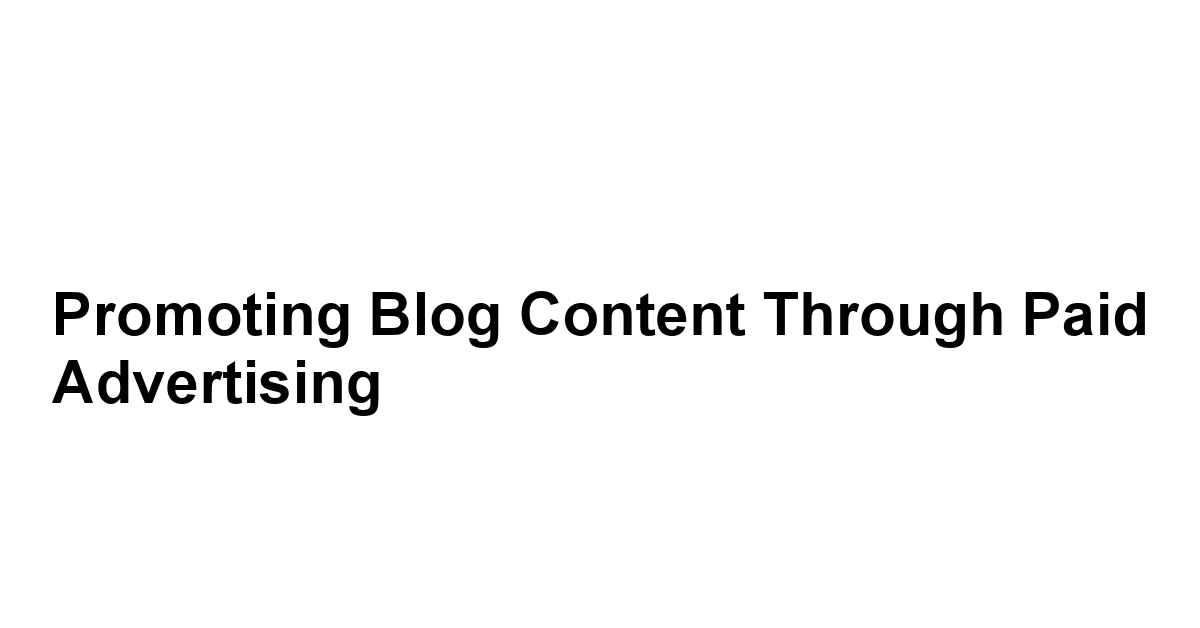
While organic reach through social media is invaluable, paid advertising can be an effective tool to promote your blog content to a broader audience.
It allows you to strategically target those most likely to engage with your material, ensuring that your efforts yield desirable returns.
Delving into paid advertising might seem daunting, but it can offer substantial benefits if approached thoughtfully.
With the right budget and creative campaigns, you can significantly increase your blog’s visibility and traffic.
Exploring Advertising Options on Social Media
There are several paid advertising options available across social media platforms:
-
Facebook Ads: Utilize Facebook’s advanced targeting options to reach specific audience segments based on demographics, interests, and behaviors.
-
Instagram Ads: Leverage Instagram’s visually-driven approach to create engaging content that can lead potential readers back to your blog.
-
Twitter Ads: Promote tweets directly to specific audiences, helping your blog content reach individuals interested in your niche.
-
Pinterest Ads: Promote pins to maximize visibility among users searching for inspiration, especially if your content is visually appealing.
-
LinkedIn Ads: Ideal for B2B bloggers, LinkedIn offers targeted options for promoting specialized content aimed at professionals.
Statistics indicate that social media advertising can increase brand awareness by up to 80%, showcasing its potential impact.
Setting a Budget and Measuring ROI
Before into advertising, it’s crucial to set a budget and monitor your return on investment ROI:
-
Define Your Budget: Based on your overall marketing strategy, determine how much you can allocate towards social media ads. Even a modest budget can yield results if used wisely.
-
Track Your Campaigns: Utilize analytics offered by the platforms to monitor how your ads are performing. Look for metrics related to clicks, conversions, and engagement.
-
Adjust Based on Performance: If certain advertisements perform better than others, consider reallocating your budget to those campaigns to maximize effectiveness.
-
Evaluate Long-Term ROI: Understand that not all ROI is immediate. Building brand awareness and trust takes time, so measure success based on long-term engagement and traffic growth.
A survey from Hootsuite revealed that 73% of marketers believe that social media advertising is vital for growing brand awareness, providing insight into its effectiveness.
Creating Compelling Ads that Drive Traffic
Creating ads that stand out while driving traffic is essential.
Here are some tips for crafting compelling advertisements:
-
Clear Call to Action: Clearly state what you want users to do. Whether it’s “Read Now” or “Learn More,” a strong CTA can drive traffic effectively.
-
Visually Engaging Creatives: Use high-quality visuals or videos that encapsulate your blog’s essence. Engaging imagery significantly increases the likelihood of interaction.
-
A/B Testing: Experiment with different ad variations to see what resonates best with your audience. Slight changes in color, text, or imagery can impact performance.
-
Keep It Short and Sweet: Ensure your ad’s message is concise but intriguing. Attention spans are short; capture your audience quickly.
According to HubSpot, the average click-through rate CTR for social media ads is 1.3%, demonstrating the importance of capturing attention effectively.
Analyzing Your Social Media Performance

Regular analysis is essential to understand the effectiveness of your social media strategy.
By tracking the right metrics, you can gain valuable insights into how well your content resonates with your audience, helping you refine your approach.
As you embark on this journey, remember that every piece of data collected is an opportunity to enhance your connection with your audience and continue growing your blog.
Tracking Key Metrics and Analytics
Here are important metrics to track:
-
Engagement Rates: Measure likes, shares, comments, and overall interaction on your posts to assess audience engagement.
-
Reach and Impressions: Monitor how many people saw your content and how many times it was displayed. This can help you gauge the effectiveness of posts.
-
Click-Through Rates CTR: Track how often users click on links within your posts, directing them to your blog. This metric shows how compelling your CTAs are.
-
Follower Growth Rate: Regularly check the rate at which you’re gaining new followers. A steady increase indicates growing interest in your content.
-
Conversion Rates: Particularly important if your goal is to drive specific actions like signing up for a newsletter, these numbers indicate how successful your social media efforts are in achieving objectives.
Adjusting Strategies Based on Data Insights
Using your metrics wisely is essential for improving performance.
Here’s how you can adjust your strategies:
-
Identify Underperforming Content: Look for patterns in your analytics to determine what type of content isn’t resonating. Use these insights to pivot your content strategy quickly.
-
Optimize Posting Times: If data shows low engagement during certain times, consider adjusting your posting schedule based on when your audience is most active.
-
Tweak Audience Targeting: If your ads aren’t performing well, reassess your targeting criteria. Ensure you’re aiming for the demographics most likely to engage with your content.
-
Experiment with Content Types: If visuals outperform text posts, delve deeper into creating infographics, videos, or interactive content.
Taking a data-driven approach can enhance your engagement rates and lead to noticeable improvements in your social media strategy.
Celebrating Your Wins and Learning from Progress
While focusing on metrics can sometimes feel heavy, it’s also important to take a moment to celebrate your successes.
Acknowledging milestones not only boosts morale but also provides a clearer motivation to keep improving.
-
Track Milestones: Keep a record of significant achievements, whether it’s reaching a certain follower count or receiving glowing feedback on a specific post.
-
Share Wins Publicly: Celebrate achievements with your audience through dedicated posts or stories. This not only shows transparency but also engages your followers.
-
Learn From Failures: Not every campaign or post will succeed, and that’s okay. Take time to analyze what went wrong, and use it as a learning opportunity.
-
Adjust Goals: As you celebrate achievements, reflect on setting new goals that push you to further enhance your blogging efforts.
Reflecting on progress—both successes and failures—can lead to meaningful insights and a deeper connection with your audience.
Leveraging User-Generated Content

User-generated content UGC offers an invaluable resource for bloggers looking to enhance their social media presence.
Inviting followers to share their experiences not only builds community but also authenticates your blog.
By harnessing the creativity and voices of your audience, you can create a more robust narrative concerning your brand.
UGC fosters trust, expands your reach, and enriches your content without requiring extensive resources on your part.
Encouraging Followers to Share Their Stories
To harness user-generated content effectively, consider the following:
-
Engage with Your Audience: Create campaigns encouraging followers to share their stories. Pose questions or themes relevant to your blog to inspire participation.
-
Hashtags: Develop a unique hashtag for your audience to use when sharing their content. This makes it easier to track submissions and creates a community around your blog.
-
Contests and Challenges: Organize contests where followers can submit content related to themes in your blog. Offer prizes or features on your platform to incentivize participation.
-
Showcase Testimonials: Encouraging followers to share reviews or testimonials about your content adds credibility and serves as effective social proof.
According to a report from Nosto, user-generated content is 79% more effective than promotional content in building trust.
This demonstrates the value of inviting your audience’s voice into your blogging community.
Showcasing User Contributions on Your Blog
Highlighting user-generated content on your blog can foster deeper connections.
Here’s how to showcase contributions effectively:
-
Feature Stories: Dedicated blog posts that highlight user stories not only engage your audience but also promote community bonding.
-
Incorporate UGC in Articles: Mix user-generated material within your posts, providing fresh perspectives and connections to your audience.
-
Create a Community Gallery: Consider creating a dedicated section on your website for user content. This could be images, testimonials, or shared experiences.
-
Social Media Highlights: Regularly showcase user-generated content on your social media profiles. Highlighting followers not only validates their contribution but encourages additional engagement.
User-generated content not only enriches your platform but also fosters durability in community relationships, allowing readers to feel personally connected to your work.
Building Authenticity through Community Voices
Authenticity is key to establishing trust in the digital space.
User-generated content can help build this authenticity:
-
Creating Diverse Narratives: Showcasing voices from your community creates a rich tapestry of stories, experiences, and perspectives, enhancing your connection with a broader audience.
-
Encouraging Open Feedback: Invite followers to share their thoughts and experiences related to your content. This openness shows you value their opinions and fosters a sense of shared mission.
-
Responses and Acknowledgment: Engage with users who have contributed by responding to their submissions and acknowledging their perspectives in your content, showing that every voice matters.
Statistics show that brands who connect authentically with their community see a 33% increase in customer loyalty, reinforcing the importance of engagement through user-generated content.
Staying Up-to-Date with Social Media Trends

As platforms evolve, embracing change can propel your blog’s growth.
Embracing the changes and finding ways to incorporate them into your blogging strategy can lead to incredible opportunities.
Following Industry News and Updates
Adopting a proactive approach to staying informed about industry trends is invaluable.
Here are some ways to stay updated:
-
Industry Publications: Subscribe to newsletters or websites dedicated to social media news, such as Social Media Examiner or HubSpot.
-
Networking Groups: Join online groups or forums that focus on blogging and social media strategies. Engaging with fellow bloggers can provide insights into emerging trends.
-
Webinars and Workshops: Attend educational sessions that cover the latest trends, tools, and strategies for social media and blogging.
-
Social Media: Follow industry experts and influencers on social media platforms. Their insights can help you spot trends early.
According to a survey by Sprout Social, 67% of marketers believe that keeping up with trends is essential for maintaining brand relevance.
Adapting to New Features and Formats
As platforms continually introduce new features, adapting to these changes gives you a competitive edge.
Here are some strategies:
-
Experimentation: Regularly try out new features as they are released on social media platforms. Whether it’s a new type of post or a different engagement feature, experimentation can reveal new opportunities.
-
Educational Resources: Invest time in learning how to use new platform features effectively. Many platforms provide guides or tutorials to help users navigate changes.
-
User Feedback: Engage your community to garner feedback on new formats. This will inform you about whether to invest time in these new features or stick with familiar formats.
-
Cross-Platform Consistency: While adapting to changes, ensure that your brand’s voice and message remain consistent across platforms.
Staying adaptable is essential; according to Buffer’s survey, 79% of marketers believe their future successes hinge on their ability to embrace change.
Innovating Your Approach to Stay Relevant
Innovation may seem daunting, but it is essential for keeping your blog fresh and inviting.
Here are ways to innovate your approach:
-
Content Diversity: Regularly explore new content formats—refresh your blog with multimedia elements such as video, podcasts, or live streams.
-
Engagement Strategies: Develop creative ways to engage your audience—consider multi-part series, storytelling formats, or interactive content that invites participation.
-
Seasonal Promotions: Embrace seasonal themes to connect with audiences on a deeper level. Whether it’s holiday-themed content or back-to-school tips, aligning with the calendar can boost relevance.
According to a report by Gartner, innovative companies see up to 20% higher customer satisfaction, highlighting the importance of staying ahead of trends and consistently striving for originality.
What do we think?
Understanding your audience on social media is not just a strategy; it’s an adventure filled with discovery and excitement! As we wrap up this exploration, remember that every post, comment, and share creates a unique opportunity for engagement and connection.
By continuously analyzing and refining our approaches, you’ll not only enhance the depth of your interactions but also create a vibrant community around your blog.
Your audience is full of diverse voices, and each one has something valuable to contribute.
When you engage with them, you’re not just promoting your blog—you’re fostering a space for genuine conversation and collaboration.
As you venture forth into the world of social media, use the insights gained from robust analytics.
Every interaction is an opportunity to strengthen relationships, and the feedback you gather can shape your content creation in thrilling new ways.
Whether it’s through polls, direct messages, or comments, encouraging dialogue creates a sense of community that keeps readers returning for more.
In this journey of self-improvement and exploration, the essence of your blogging success lies in the relationships you cultivate.
It’s all about connecting deeply, understanding their interests, and delivering content that resonates with their lives.
Remember that consistency is key; having a regular posting schedule while maintaining high-quality posts will ensure your community sees you as a trusted voice in the noise of social media.
Your followers will appreciate the value you provide, and they’ll naturally become your biggest advocates—sharing your content and expanding your reach without you having to ask.
Lastly, as both a learner and a teacher, embrace user-generated content as a powerful tool—you don’t have to do this alone! By inviting your audience to share their experiences, you not only enrich your content but also build a culture of participation.
Users love being featured, and it brings authenticity to your brand.
So, keep asking questions, sharing stories, and most importantly, have fun exploring the vibrant world of social media.
With your audience by your side, the journey will be as rewarding as the destination.
Here’s to an adventure that leads to growth, connection, and endless inspiration!

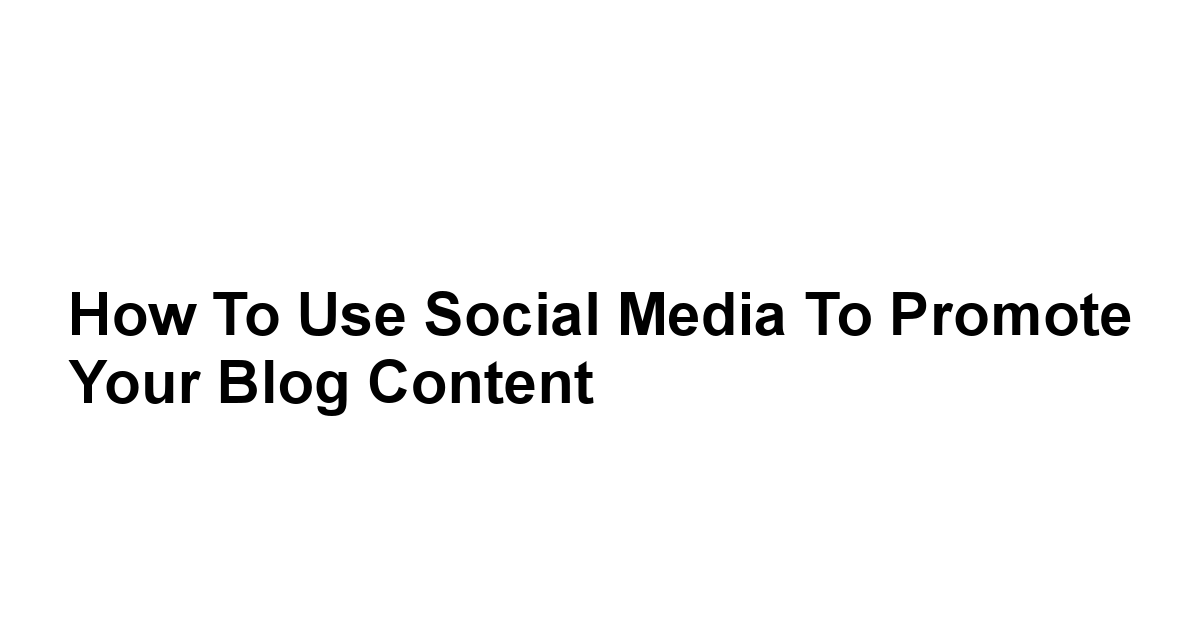
Leave a Reply